From extraordinary work by overlooked Japanese women photographers to haunting images by Sophie Calle, discover our highlights from the 2024 edition of the French festival
Early July rang in the latest edition of Les Rencontres d’Arles, one of the most anticipated annual photography festivals in the world. Lasting for three months, the exceptionally well-curated event sees historic venues across the idyllic Provence city transformed into exhibition spaces for work by established and emerging artists alike. As such, it’s difficult to experience the festival’s myriad offerings in a short span of time, which is why we’ve put together a guide of our must-see shows, ranging from pixelated sunsets and a Sophie Calle burial to extraordinary photographs by Japanese women photographers, and beyond.
Mary Ellen Mark: Encounters at Espace Van Gogh [lead image]
Following on from its C/O Berlin debut last year, Encounters, the first career-spanning survey of US photographer Mary Ellen Mark, has relocated to the Espace Van Gogh – the former hospital where Van Gogh sought medical attention after chopping off his ear. The exhibition space is accessed through the building’s verdant courtyard, modelled on Van Gogh’s Le Jardin de l'Hôtel de Dieu, whereafter you are plunged into Mark’s largely monochrome world.
Aside from celebrity portraiture, most of the late photographer’s work, both commissioned and personal, focused on marginalised sectors of society, from inpatients at a psychiatric institution in Oregon to sex workers in Mumbai. In each case, Mark captured her subjects with immense skill and sensitivity, typically spending weeks or months getting to know them, and often remaining in touch thereafter. Making for heavy but vital viewing, the show also offers up moments of levity – Patrick Swayze in a little black dress, for instance – and a characterful array of portraits taken at an identical twins convention.
Read our feature on the exhibition here.
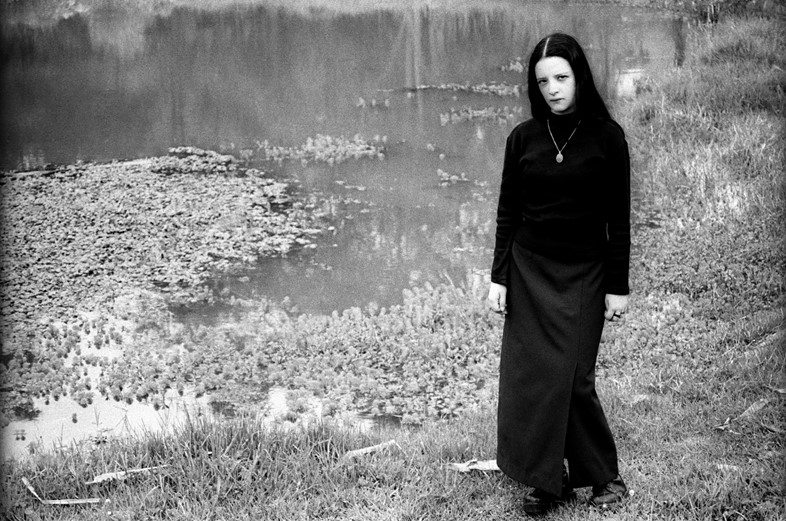
Vampires Fear No Looking Glass at Église des Trinitaires
The rib-vaulted, somewhat dilapidated Église des Trinitaires is an apt venue for Vampires Fear No Looking Glass, a group show spotlighting the work of countercultural art collective El Grupo de Cali. Founded in the Colombian city of Cali in the 1970s by writer Andrés Caicedo and filmmakers Luis Ospina and Carlos Mayolo, the group’s films, publications, artworks and photographs blend gritty realism with satirical and surrealist elements to critique Latin America's political and popular culture.
The exhibition explores the Cali creatives’ dark visual language and ongoing influence, “sucking the visitor into the myth of Caliwood, a term which has settled in the minds of younger underground generations, and which is fuelled by ideas around vampirism, the gothic and terror, staged in violent, tropical environments”. This is embodied in a wonderful black-and-white series by María Isabel Rueda, titled Vampires of the Savannah, capturing a fabulously brooding array of young women, dressed all in black, in conversely lush surroundings.
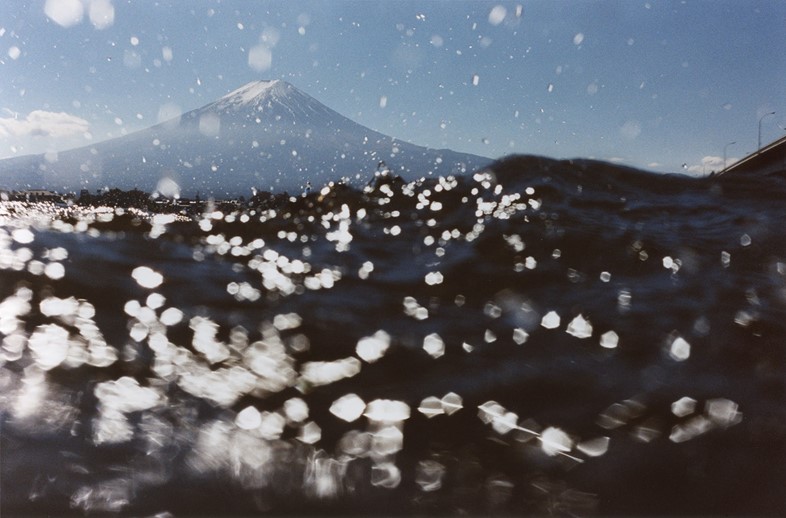
I’m So Happy You Are Here at Palais de l’Archevêché
A short clamber to the first floor of the imposing Palais de l’Archevêché is rewarded by I’m So Happy You Are Here, a revelatory ode to Japanese women photographers from the 1950s to the present day. Here, the work of more than 25 artists from different generations – some well-known, others bafflingly overlooked – is divided into three distinct sections, centring on observations of everyday life, critical perspectives on Japanese society (and the role of women within it), and experiments with and extensions of the photographic form.
Hard-to-pick highlights include Toyoko Tokiwa’s notorious 1957 photobook Kiken na Adabana (Poison Flowers), which draws back the curtain on a vibrant community of sex workers operating in postwar Yokohama, and contemporary image-maker Yurie Nagashima’s raw and recalcitrant snapshots from her own life, which boldly subvert traditional notions of femininity and self-representation. Particularly beautiful are the images from Narahashi Asako’s series Half Awake and Half Asleep in the Water, awe-inspiring landscapes captured from a partially submerged perspective so that the viewer is cast adrift, gazing towards the shore.
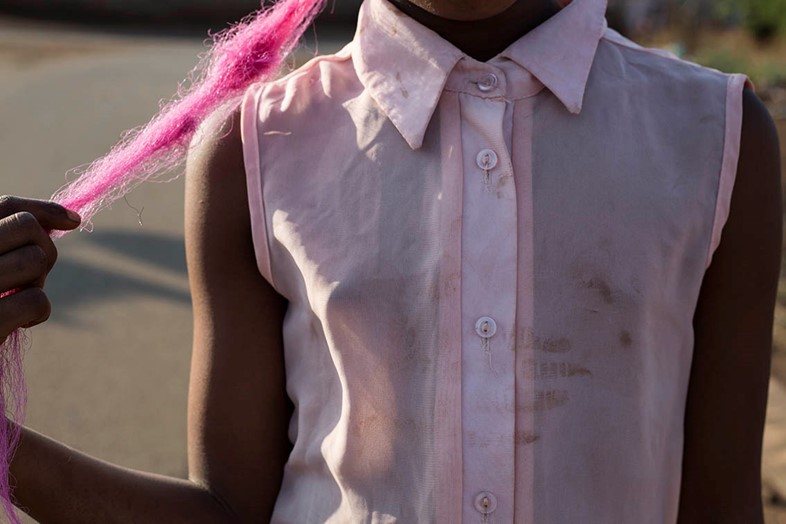
Tshepiso Mazibuko: Ho Tshepa Ntsheped Ya Bontshepe at Espace Monoprix
Evoking visions of an adult Narnia, entry to this year’s Discovery Award section involves a journey through the women’s lingerie department of the Arles Monoprix. There, the work of Tshepiso Mazibuko, a young photographer from Thokoza, a township just outside of Johannesburg, proves particularly impactful. Made up of images from her project Ho tshepa ntshepedi ya bontshepe – a Sesotho proverb meaning “to believe in something that will never happen” – Mazibuko’s award-winning submission sheds light on the lived experiences of the “born free” generation (the first generation of Black South Africans born after the end of Apartheid) to which she belongs.
A girl’s pale pink shirt is marked by an oily handprint; a blurred figure sprints through a run-down neighbourhood; a young man seated on a sofa delivers a sombre stare. Through such open-ended yet narratively suggestive scenes, the artist invokes “her own frustration with the notion of born free, the trauma and responsibility inherited by her generation, the pervasive sense of sadness in a vulnerable place,” to quote the Discovery Award curator Audrey Illouz. Yet, the prevailing mood is charged: “something stumbles,” Illouz notes, “but a form of resistance emerges.”
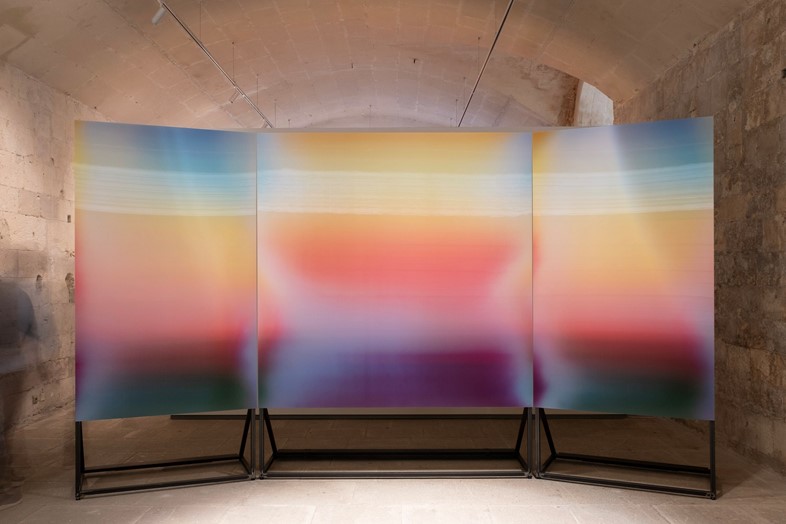
Mustapha Azeroual and Marjolaine Lévy: The Green Ray at Cloître Saint-Trophime
At some point during your Rencontres d’Arles visit, you’re likely to feel hot and sticky and a little overstimulated, the antidote to which lies in The Green Ray. Situated in a cool, dimly lit space overlooking the Saint Trophime Cloister, the exhibit is a collaboration between artist Mustapha Azeroual and curator Marjolaine Lévy, winners of the esteemed BMW Art Makers programme, which grants an artist and curator duo carte blanche to create new work for the festival each year. As its title suggests, the show draws on the notion of the green ray, that rare optical phenomenon channelled by Jules Verne, Man Ray et al, wherein a green dot appears for a split second above the sun as it rises or sets.
For their take, Azeroual and Lévy enlisted multiple sailors to snap smartphone shots of sunrises and sunsets as they voyaged across different oceans. Azeroual then extracted the individual pixels of colour from the images and used them to “paint” two mesmerising abstract landscapes: vast tripartite lenticular panopticons that subtly alter as you move around them. Not merely meditative colour studies with a Rothko-esque ability to beguile, these works also offer a politically charged snapshot of our contemporary moment, their differing tones the direct result of human pollution upon the seas and skies. “There is a double reading,” explains Lévy. ”The idea is not to denounce anything, but to make a subtle and poetic observation. We want the audience to experience something new and to engage with it.”
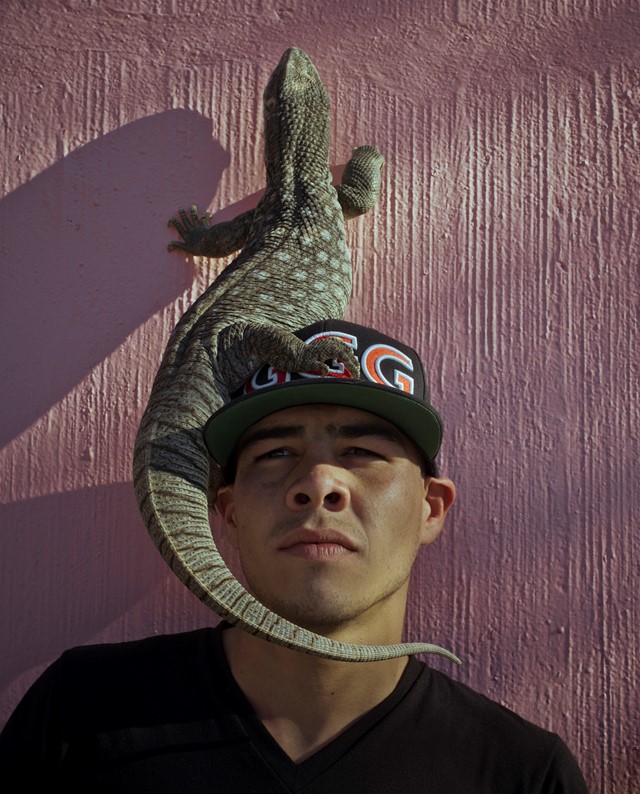
Cristina De Middel: Journey to the Center at Église des Frères Prêcheurs
In the lofty gothic environs of the Église des Frères Prêcheurs, meanwhile, the Spanish photographer Cristina de Middel turns both her lens and her imagination to Mexico and the migration route from its southern border with Guatemala to the small Californian town of Felicity. Looking to challenge the reductive viewpoint on migration peddled by US politicians and news outlets, de Middel spent a number of years accompanying migrants along the different the stages of their journey through Mexico to the US, presenting their quest as “heroic and daring”, not simply a means of escape.
The exhibition is made up of straight photojournalism combined with surreally staged imagery, which is displayed alongside archival footage and found objects to craft a complex and compelling narrative – one filled with heroes and villains, absurdity and danger, beauty and brutality, and the “dystopic disappointment” that is Felicity, a final destination that proclaims itself the “centre of the world” but leaves a lot to be desired.

Sophie Calle: Neither Give Nor Throw Away
A descent into the ancient cryptoporticus, a series of underground chambers beneath the city centre, makes for an atmospheric conclusion to the Rencontres d’Arles experience. Last year, this dank exhibition space caused damage to the photographs that adorned its walls – a fact that inspired the inimitable French artist Sophie Calle to rehome some of her own, already-decaying works there.
These pieces, which fell victim to mould spores while sitting in storage, include Calle’s series The Blind, wherein blind subjects describe their visions of beauty, and – rather poignantly – various works that speak of death or loss. It was suggested that Calle destroy the pieces to prevent contamination, but, following in the footsteps of the artist Roland Topor, who buried an old sweater “he could not bring himself to give away nor to discard”, she decided to lay them to rest, alongside a number of other worthy objects from her life (a torn wedding dress, a bunch of keys). The resulting display is sombre and elegiac, its haunting impression lingering even as you reemerge into the scorching Arles sun.
[NB. If you have time, be sure to check out Luma, where other excellent shows abound, including a Joel Coen-curated selection of Lee Friedlander photographs and exhibitions from Judy Chicago, William Kentridge, Theaster Gates and Mo Yi].
Rencontres d’Arles 2024 runs until 29 September 2024. With special thanks to BMW.
